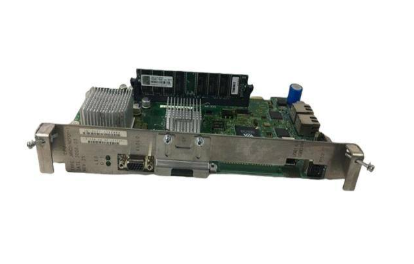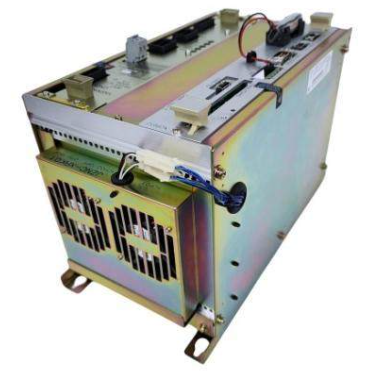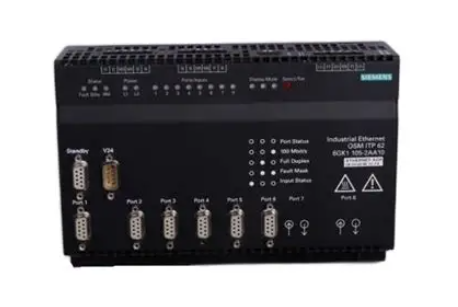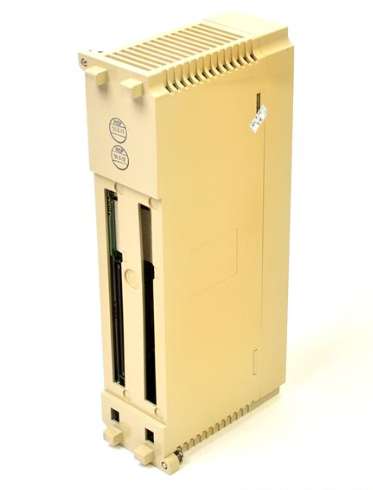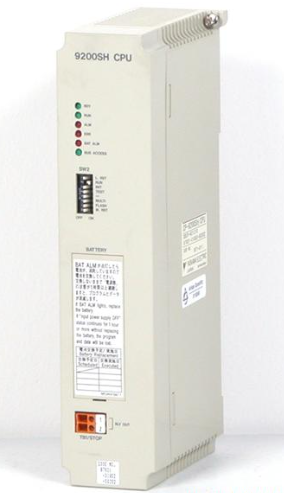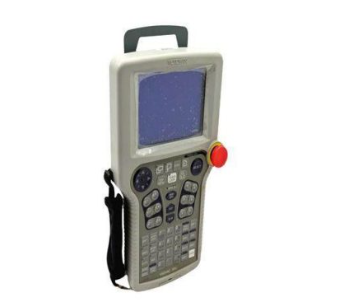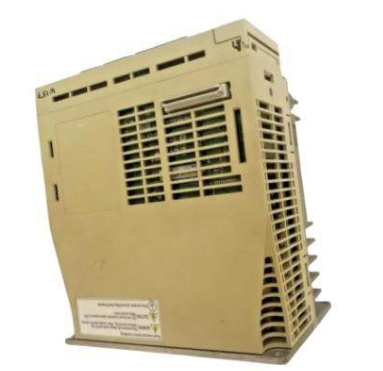AB 1769 Compact I/O Modules Specifications
AB 1769 Compact I/O Modules Specifications
Application scenarios and mounting: for use with CompactLogix controllers, MicroLogix 1500 controller expansion I/O, in combination with 1769-ADN DeviceNet Adapter or 1769-AENTR Ethernet Adapter. Can be mounted on DIN rails or in panels, with modules mechanically locked to each other by a specific design and connected to a communication bus.
Module types and specifications
Digital I/O modules: AC and DC digital modules, e.g. 1769-IA8I for 120V AC input with 8 inputs, 1769-IQ16 for 24V DC sink/source input with 16 inputs. The 1769-IQ16 is a 24V DC sink/source input with 16 inputs. It has functions such as input filtering and optical isolation, and some output modules have built-in surge suppression.
Analogue I/O Modules: For example, 1769-IF4 supports 4 differential or single-ended inputs with various input ranges. With features such as configurable channels, on-board scaling, auto-calibration, etc., the data can be configured in various formats.
Special Function I/O Modules: 1769-ARM is used to reserve module slots; 1769-ASCII provides ASCII interface; 1769-HSC can handle high-speed input signals, each with unique functions and applicable scenarios.
Technical Parameters
Electrical parameters: each module has different parameters such as voltage, current, power, etc. For example, 1769-IA8I has an operating voltage of 79 - 132V AC, 1769-IF4 has different values for current consumption under different voltages. Analogue modules have resolution, accuracy and other indicators.
Environmental parameters: operating temperature 0 - 60°C, storage temperature - 40 - 85°C, relative humidity 5 - 95% non-condensing, able to withstand certain vibration and shock.
Certification information: Most modules have passed c-UL, CE, C-Tick and other certificates, and some are suitable for hazardous locations.
caveat
Pre-Installation Preparation
Confirm Application Scenarios and System Compatibility: The 1769 Compact I/O Module can be used in a variety of scenarios, such as with CompactLogix controllers, MicroLogix 1500 controllers, or in combination with specific adapters. Note, however, that unless connected to a MicroLogix 1500 base, each I/O module set must be equipped with a separate power supply. Different controller models have requirements for the number of local I/O modules supported. For example, controllers such as the 1769-L24ER-QB1B only support a specific number of local modules, so be sure to check system requirements and module compatibility before installation.
Electrostatic protection: The equipment is sensitive to electrostatic discharge, you should touch a grounded object to discharge static electricity during operation, wear a grounded wrist strap, avoid touching connectors, pins and circuit components on the component board, use an electrostatic safe workstation, and store the equipment in an antistatic package to prevent internal damage caused by static electricity from affecting normal operation.
Hardware Installation
Mounting Location Options: Modules can be mounted on DIN rails or panels. When mounting on DIN rails, ensure that zinc-plated yellow chromate steel DIN rails are used to ensure a good grounding, avoid materials that are prone to corrosion, oxidation, or poor electrical conductivity, such as aluminium or plastic rails, and that the rails are secured at intervals of approximately 200mm (7.8in.), with the use of end anchors as appropriate. Also note that the modules should be spaced 50mm (2in.) from surrounding equipment to provide ventilation and electrical isolation.
Module Mounting Procedure: For DIN rail mounting, hook the DIN rail locking hooks on the top of the module to the rail, then swing the module down and press to snap it into place; for panel mounting, use two M4 or #8 pan head screws to mark the drilling locations on the panel using the assembled module as a template, and then drill the holes to mount the module. Some special modules, such as the 1769-ECR right end cap, must be mounted on the right side of the module under certain circumstances to ensure proper system operation.
Wiring connections
Power Connection: When connecting to an external power supply, a Class 2 or SELV - approved power supply must be used to convert 115/230V AC to 24V DC. Note that the external power supply should be placed in the same enclosure as the controller to avoid arcing. When wiring, follow the specifications, such as stripping the wires to the correct length, tightening the screws to the proper torque, and paying attention to the mounting position of the power control device, as mounting it on the COM terminal may result in the controller not being able to power up or power down properly.
I/O module wiring: Different types of I/O modules are wired in different ways, and should be operated strictly according to the wiring diagrams and specifications. For example, when wiring analogue input modules, choose the correct wiring method according to the type of sensor and ensure that the shield is properly grounded to reduce electrical noise interference; when wiring output modules, for controlling inductive loads, it may be necessary to add additional surge suppression devices to protect the module and extend the life of the relay contacts.
- EMERSON
- Honeywell
- CTI
- Rolls-Royce
- General Electric
- Woodward
- Yaskawa
- xYCOM
- Motorola
- Siemens
- Rockwell
- ABB
- B&R
- HIMA
- Construction site
- electricity
- Automobile market
- PLC
- DCS
- Motor drivers
- VSD
- Implications
- cement
- CO2
- CEM
- methane
- Artificial intelligence
- Titanic
- Solar energy
- Hydrogen fuel cell
- Hydrogen and fuel cells
- Hydrogen and oxygen fuel cells
- tyre
- Chemical fiber
- dynamo
- corpuscle
- Pulp and paper
- printing
- fossil
- FANUC
- Food and beverage
- Life science
- Sewage treatment
- Personal care
- electricity
- boats
- infrastructure
- Automobile industry
- metallurgy
- Nuclear power generation
- Geothermal power generation
- Water and wastewater
- Infrastructure construction
- Mine hazard
- steel
- papermaking
- Natural gas industry
- Infrastructure construction
- Power and energy
- Rubber and plastic
- Renewable energy
- pharmacy
- mining
- Plastic industry
- Schneider
- Kongsberg
- NI
- Wind energy
- International petroleum
- International new energy network
- gas
- WATLOW
- ProSoft
- SEW
- wind
- ADVANCED
- Reliance
- YOKOGAWA
- TRICONEX
- FOXBORO
- METSO
- MAN
- Advantest
- ADVANCED
- ALSTOM
- Control Wave
- AB
- AMAT
- STUDER
- KONGSBERG
- MOTOROLA
- DANAHER MOTION
- Bently
- Galil
- EATON
- MOLEX
- Triconex
- DEIF
- B&W
- ZYGO
- Aerotech
- DANFOSS
- KOLLMORGEN
- Beijer
- Endress+Hauser
- MOOG
- KB
- Moxa
- Rexroth
- YAMAHA
- Johnson
- Westinghouse
- WAGO
- TOSHIBA
- TEKTRONIX
- BENDER
- BMCM
- SMC


Email:wang@kongjiangauto.com

